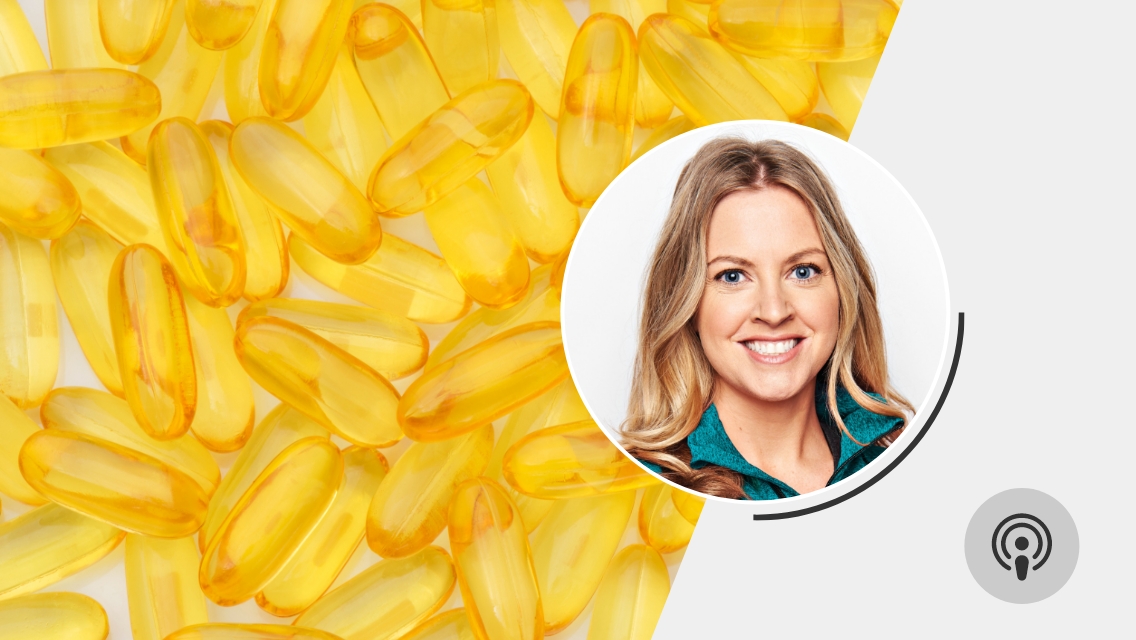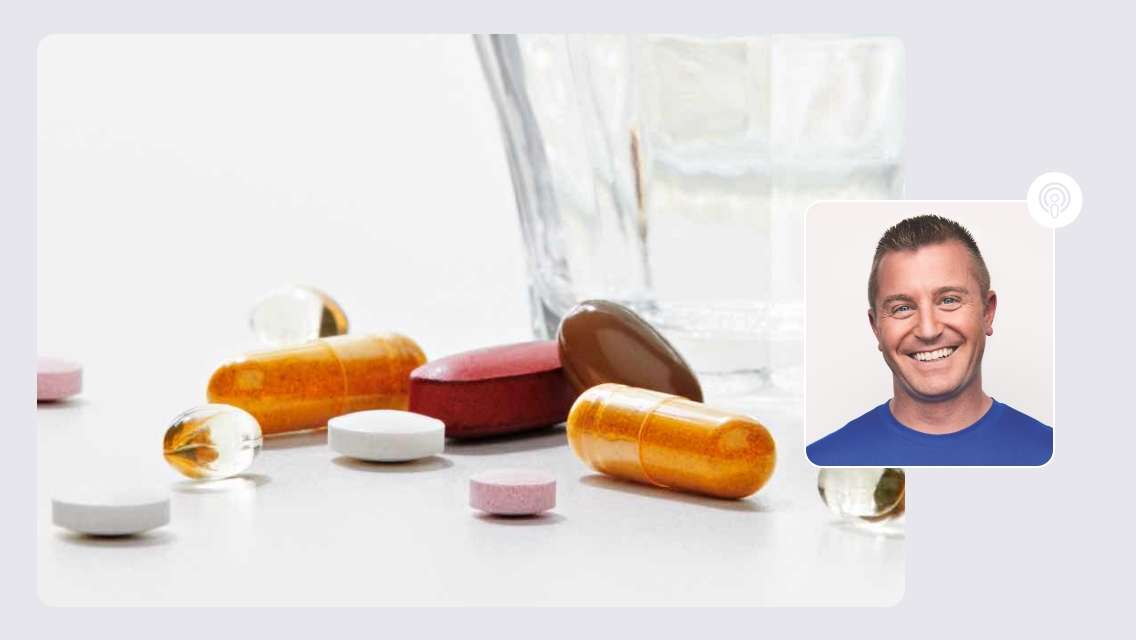More than half of the world’s population is deficient in vitamin D, and as many as four out of five people in the United States may be below optimal levels. This raises our risk for a number of health problems, including diabetes, arthritis, dementia, bone loss, and the flu, to name a few.
Fortunately, the most common micronutrient deficiency in the world is easily preventable. High-quality vitamin D supplements are inexpensive, and if you live in the right latitude, you can also get a healthy dose from moderate midday sun exposure.
What Is Vitamin D?
Vitamin D is actually a pro-hormone, not a vitamin. It influences the expression of more than 200 genes and acts as a precursor to hormones such as DHEA and cortisol.
The active form of vitamin D is 25-hydroxy vitamin D, or 25(OH)D.
Through your diet, you consume vitamin D in two forms: ergocalciferol (D2) and cholecalciferol (D3). However, even if you eat fortified foods, the amount you consume through diet is a fraction of what you need each day.
Ergocalciferol comes from plants and is not converted to active vitamin D in the body very well. Cholecalciferol comes from animals and is the best form for increasing 25(OH)D. It’s also the form most researchers use.
Of course, food and supplementation aren’t the only ways to raise vitamin D levels. Sun exposure is also our main supplier.
In ancient Egypt, Greece, Rome, Babylon, and Persia, sunlight (heliotherapy) prevented and treated various medical conditions.
Juzeniene A, et al.
When your skin is exposed to sunlight, UVB rays stimulate the production of vitamin D.
To benefit from the sun’s rays, you need to live close to the equator and expose most of your skin to the midday sun for 20 to 30 minutes. That would give you about 10,000 IU of vitamin D, or 200 times the amount in a glass of fortified milk.
Today, we often get more light from our computer screens and cell phones than light from the sun. And even when we get out in the sun, we’re often covered in so much sunblock that we won’t benefit from the UVB rays anyway.
Effects of Low Vitamin D
Spending your days indoors limits vitamin D, but it’s not the only cause of low levels.
Liver and kidney dysfunctions compromise the conversion of cholecalciferol to active vitamin D. Also, certain medications like statins and plant compounds interfere with the absorption of vitamin D.
The Flu
A British doctor named R. Edgar Hope-Simpson was the first to connect low vitamin D and the flu. He observed that in both hemispheres, cases of the flu rise in late fall and early winter, which is when vitamin D levels drop from their summertime high.
In one study, supplementing with 2,000 IU of cholecalciferol has been shown to lessen the occurrence of cold and flu symptoms.
In another study, children in Japan took either 1,200 IU of cholecalciferol or a placebo from December 2008 through March 2009. At the end of the study, 18.6 percent of the placebo group and 10.8 percent of the vitamin D group got the flu. That’s a 42 percent reduction using an amount that still isn’t enough to reach optimal vitamin D levels in most people.
Insulin Resistance and Diabetes
Excessive carbohydrate consumption causes insulin resistance and diabetes. However, low vitamin D may make it harder for your body to handle carbs, making it more likely you’ll develop carbohydrate intolerance.
Research shows low vitamin D increases the risk of developing metabolic syndrome by 52 percent. Raising levels in those with insulin resistance has been shown to reduce symptoms of insulin resistance.
Obese people tend to have the lowest levels of vitamin D and since insulin resistance and obesity are often tied together, optimizing vitamin D may help improve body composition when also following an effective nutrition and exercise program.
Heart Disease
Inadequate vitamin D is associated with an increased risk for cardiovascular concerns. Vitamin D deficiency is associated with a 50 percent higher risk of myocardial infarction, in addition to an increased chance of hypertension, congestive heart failure, and peripheral vascular disease.
Vitamin D reduces the buildup of cholesterol in macrophages, white blood cells that attempt to repair damaged heart tissue. Without sufficient vitamin D, the macrophages turn into foam cells, laying down fatty deposits and causing atherosclerosis.
Osteoporosis and Bone Fractures
Calcium has been the poster child for bone health for decades. Yet, without sufficient magnesium and vitamins K and D, taking tons of calcium is pointless. In fact, excessive calcium supplementation without magnesium, D, and K could lead to significant health problems. Sufficient vitamin D intake can help mediate calcium absorption.
Other Effects of Low Vitamin D
The following is part of a growing list of complications connected to low vitamin D.
- Atopic dermatitis
- Cancer
- Decreased adrenal hormone production
- Decreased strength
- Increased body fat
- Low birth weight of newborn babies
- Multiple sclerosis
- Psoriasis
- Rheumatoid arthritis
- Schizophrenia
- Type I diabetes
What Are Optimal Vitamin D Levels?
The table below shows the risk ranges typically referenced by doctors and lab testing companies.
| STANDARD VITAMIN D RISK LEVELS | ||
|---|---|---|
| Risk Category | ng/mL | nmol/l |
| Deficient | <20 | <50 |
| Insufficient | 20-29 | 50-72 |
| Adequate | >30 | >73 |
Unfortunately, these levels should not be mistaken for sufficient. The term “adequate” should probably be replaced with “survivable.”
The vitamin D council recommends the following ranges based on the most current research.
| OPTIMAL VITAMIN D RISK LEVELS | ||
|---|---|---|
| Risk Category | ng/mL | nmol/l |
| Deficient | <40 | <100 |
| Sufficient | 40-80 | 100-200 |
| High Normal | 80-100 | 200-250 |
| Undesirable | 100-150 | 250-375 |
| Toxic | >150 | >375 |
Remember, the average person’s vitamin D level is only 16–25 ng/mL
We encourage asking your doctor to order a vitamin D lab test for you on a regular basis.
How to Choose a Vitamin D Supplement
Researchers almost always use cholecalciferol (vitamin D3) to study vitamin D’s effects on the body. It is the type we recommend for supplementation.
(You may also see vitamin D2 (ergocalciferol) in dietary supplements, but to become 25-hydroxy vitamin D, D2 must be converted to D3, and the human body does a poor job at that.)
It’s important to note though that not all cholecalciferol is the same. Pure vitamin D is incredibly small. It’s so small that raw material suppliers (the companies that make the ingredients for supplement manufacturers) usually dilute it to make it easier to work with.
Most of the time, they dilute cholecalciferol with lactose, BHT, BHA, sodium benzoate, or sorbic acid.
Since the raw material the supplement company orders is cholecalciferol, and the lactose is only included to dilute the nutrient, the lactose does not need to be disclosed on the label of the finished product.
Some more inexpensive types of vitamin D are likely diluted with lactose or one of the other questionable materials mentioned above, which can be problematic if you’re lactose intolerant and don’t know you’re consuming lactose.
One of the benefits of the LTH Armor Vitamin D3+K2 is that we use cholecalciferol that isn’t diluted with lactose.
To maintain optimal vitamin D levels, the vitamin D council recommends:
- Children: 1,000 IU per 25 pounds of body weight per day
- Adults (including pregnant and breastfeeding women): 5,000 IU per day
- Upper limit: 10,000 IU per day
Frequently Asked Questions
What are the best sources of vitamin D?
The best sources of vitamin D are exposure to sunlight (without sunblock) and dietary supplements. Food sources, even when they’re fortified, contain very little vitamin D.
How much vitamin D should you get?
Your dietary need for vitamin D varies based on your sun exposure and skin type. However, most people need much more than the 400 IU to 800 IU commonly found in foods. The Vitamin D Council suggests about 5,000 IU per day for most people.
Are vitamin D supplements vegan?
Most vitamin D comes from fish skin or sheep’s wool, so it is not vegan. However, it’s possible to get vitamin D from plants called lichens, so more companies will likely offer this type of vitamin D to satisfy the needs of the vegan market. Vitamin D2 comes from plants, so vegan supplements may contain this form, however, as noted above, the body does a poor job at converting D2 to D3.
The LTH Armor Vitamin D3+K2 supplement delivers 5,000 IU of cholecalciferol (vitamin D3) per capsule in a lactose-free formula.
References
Cannell JJ, Vieth R, Umhau JC, et al. Epidemic influence and vitamin D. Epidemiol Infect. 2006;134:1129-1140
Curtis EM, Moon RJ, Harvey NC, Cooper C. Maternal vitamin D supplementation during pregnancy. Brit Med Bulletin. 2018;126:57-77.
Doheny K. Low Vitamin D Linked to Poor Diabetes Control. /WebMD/. July 21, 2010 ( http://diabetes.webmd.com/news/20100621/low-vitamin-d-linked-to-poor-diabetes-control )
Grant W. In defense of the sun: An estimate of changes in mortality rates in the United States if mean serum 25-hydroxyvitamin D levels were raised to 45 ng/mL by solar ultraviolet-B irradiance. Dermato Endocrinology. 2009;1(4):207-214.
Heaney RP. What Is Vitamin D Insufficiency? And Does It Matter? Calcif Tissue Int. 2013;92:177-183.
Hyman M. Vitamin D: Why You Are Probably NOT Getting Enough and How That Makes You Sick. The Huffington Post. May 22, 2010.
Juzeniene A, Grigalavicius M, Juraleviciute M, Grant WB. Phytotherapy and vitamin D. Clinics in Dermatology. 2016;34:548-555.
Kamycheva E, Joakimsen RM, Jorde R. Intakes of calcium and vitamin d predict body mass index in the population of Northern Norway. J Nutr. 2003;133:201-6.
Laino C. Low Vitamin D Levels Linked to Asthma. WebMD. March 3, 2010.
McGreevey S. More Pregnant Women Not Getting Enough Vitamin D. Medical News Today. May 12, 2010.
Medical News Today. Low Levels Of Vitamin D Linked To Muscle Fat, Decreased Strength In Young People. Medical News Today online article http://www.medicalnewstoday.com/articles/181501.php
Medical News Today. Vitamin D Expert Says More Than Half The World’s Population Gets Insufficient Vitamin D. Medical News Today online article. July 19, 2010.
Oh J, Weing S, Felton SK, et al. 1,25(OH) vitamin D inhibits foam cell formation and suppresses macrophage cholesterol uptake in patients with type 2 diabetes mellitus. Circulation. 2009;120(8):687-698.
Raloff J. Vitamin D is a flu fighter. ScienceNews. March 16, 2010.
Shahar D, Schwarzfuch D, Fraser D, et al. Dairy calcium intake, serum vitamin D, and successful weight loss. /Am J Clin Nutr/. September 1, 2010, published ahead of print.
Silva MC, Furlanetto TW. Intestinal absorption of vitamin D: a systematic review. Nutrition Rev. 2018;76(1)60-76
Steenhuysen J. More than three quarters of U.S. flu shots ineffective–report. Reuters. January 2015. Retrieved Sept 6 2018.
Tirbassi G, Salvio G, Altieri B, et al. Adrenal disorders: Is there any role for vitamin D? Rev Endocrine Metab Disord. 2017;18:355-362
Urashima M, Takaaki S, Okazaki M, et al. Randomized trial of vitamin D supplementation to prevent seasonal influenza A in school children. Am J Clin Nutr. 2010;91:1255-1260.
Vitamin D Council. For health professionals: Position statement on supplementation, blood levels and sun exposure. Retrieved Sept 9 2018. https://www.vitamindcouncil.org/for-health-professionals-position-statement-on-supplementation-blood-levels-and-sun-exposure/
von Hurst P, Stonehouse W, Coad J. Vitamin D supplementation reduces insulin resistance in South Asian women living in New Zealand who are insulin resistant and vitamin D deficient – a randomised, placebo-controlled trial. Brit Jour Nutr. 2010;103:549-555.
WebMd. Treating Vitamin D Deficiency Significantly Reduces Heart Disease Risk. WebMD online article, source: Jess Gomez, Intermountain Medical Center. http://www.medicalnewstoday.com/articles/182425.php
Wellcome Trust. Vitamin D Found to Influence Over 200 Genes, Highlighting Links to Disease. ScienceDaily 24 August 2010.





